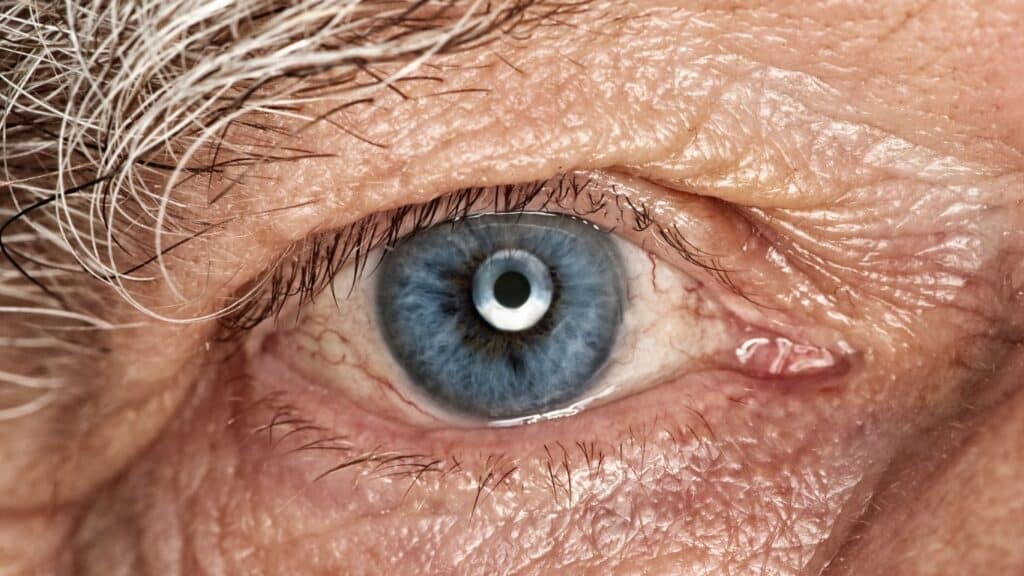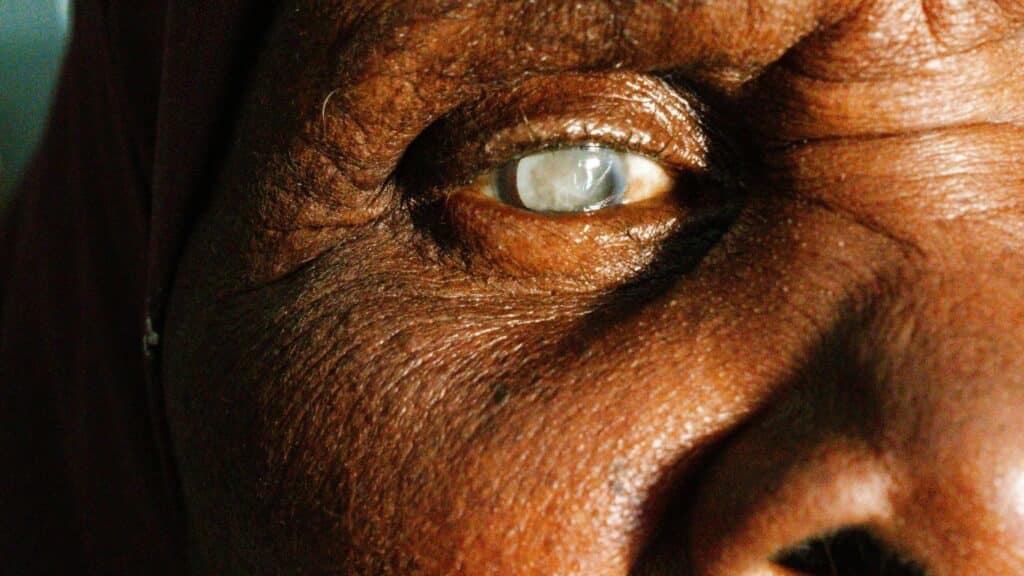Inside the eye, there is a clear lens which is made of protein. Muscles inside the eye react to what we look at and adjust the shape and thickness of the lens in a way that focuses the light reflected off the image we are viewing, onto the tissue lining the inside and back of the eye (retina). From there, the optic nerve transmits the image to our brain for interpretation.
In our youth the lens of the eye is crystal clear and flexible and the muscles are able to change its shape and thickness quickly, but as we age, the protein in the lens becomes more rigid. At some point, muscles in the eye are not powerful enough to overcome the rigidity of the lens, and the lens cannot effectively focus the image onto the back of the eye. This age related process is called presbyopia. The inability of the lens to focus images onto the back of the eye is called a ‘refractive error’. The main types of refractive errors are myopia (nearsightedness), hyperopia (farsightedness), presbyopia (loss of near vision due to increasing rigidity of the lens), and astigmatism.
As we age, this refractive error (due to presbyopia) increases and often times people compensate by hold things farther and farther from their eyes in order to see or read them clearly. This is one sign that the patient is experiencing presbyopia. Another tell-tale sign of possible presbyopia is the increasing need for brighter lighting. Like many other focal imperfections, presbyopia can be less noticeable in bright light because the pupil becomes smaller and the smaller pupil helps to better focus the light that is moving through the lens. Presbyopia is a progressive condition that only gets worse with time and can only be corrected with glasses, contacts or lens based refractive surgery.
As we enter into our 50’s and 60’s, the lens of the eye (in addition to becoming more rigid), also begins to become cloudy (opaque) and these opacities (cataracts) block the passage of light through the lens. Cataract development is generally a slow and gradual process much like hair turning grey or the development of wrinkles. You can’t generally see cataracts simply by looking at someone from the outside, but the person developing them may begin to experience blurry vision, loss of night and low-light vision, change in the ability to perceive colors, double vision, sensitivity to light, halos around lights, inability to distinguish details such as contours in objects, features on faces or expressions of a person any distance away.
When cataracts interfere with a person’s ability to do the things they want and need to do, it is advised that the patient be evaluated for cataract removal surgery. Cataract surgery is the most common surgical procedure performed today. It takes about 15 minutes, is virtually painless, recovery time is minimal and initial results are virtually immediate and improve with time.
 Dr. Jason Bullajian (pronounced bull-ahzh-ee-n) is an ophthalmologist, eye surgeon and founder of Texas Vision & Laser Center located in Frisco and McKinney Texas. For more information or to connect, call 972-548-2015 or visit TexasVisionAndLaser.com.
Dr. Jason Bullajian (pronounced bull-ahzh-ee-n) is an ophthalmologist, eye surgeon and founder of Texas Vision & Laser Center located in Frisco and McKinney Texas. For more information or to connect, call 972-548-2015 or visit TexasVisionAndLaser.com.



